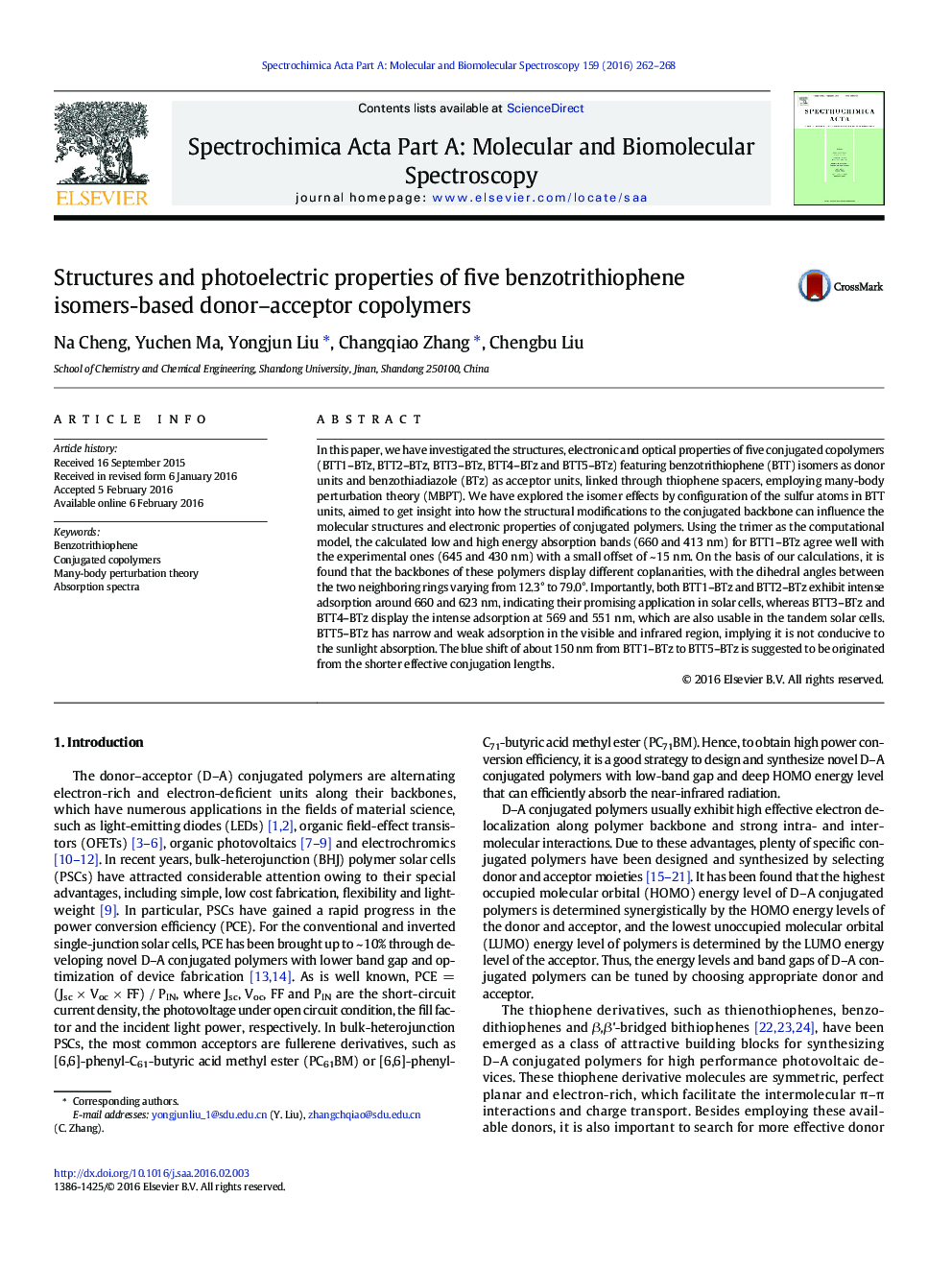| کد مقاله | کد نشریه | سال انتشار | مقاله انگلیسی | نسخه تمام متن |
|---|---|---|---|---|
| 1228946 | 1495210 | 2016 | 7 صفحه PDF | دانلود رایگان |
• The optical properties of BTT-based donor–acceptor copolymers were studied.
• The positions of sulfur atoms in BTT units have great influence on the properties.
• The maximum shift of main absorption peaks of these polymers can reach ~ 150 nm.
In this paper, we have investigated the structures, electronic and optical properties of five conjugated copolymers (BTT1–BTz, BTT2–BTz, BTT3–BTz, BTT4–BTz and BTT5–BTz) featuring benzotrithiophene (BTT) isomers as donor units and benzothiadiazole (BTz) as acceptor units, linked through thiophene spacers, employing many-body perturbation theory (MBPT). We have explored the isomer effects by configuration of the sulfur atoms in BTT units, aimed to get insight into how the structural modifications to the conjugated backbone can influence the molecular structures and electronic properties of conjugated polymers. Using the trimer as the computational model, the calculated low and high energy absorption bands (660 and 413 nm) for BTT1–BTz agree well with the experimental ones (645 and 430 nm) with a small offset of ~ 15 nm. On the basis of our calculations, it is found that the backbones of these polymers display different coplanarities, with the dihedral angles between the two neighboring rings varying from 12.3° to 79.0°. Importantly, both BTT1–BTz and BTT2–BTz exhibit intense adsorption around 660 and 623 nm, indicating their promising application in solar cells, whereas BTT3–BTz and BTT4–BTz display the intense adsorption at 569 and 551 nm, which are also usable in the tandem solar cells. BTT5–BTz has narrow and weak adsorption in the visible and infrared region, implying it is not conducive to the sunlight absorption. The blue shift of about 150 nm from BTT1–BTz to BTT5–BTz is suggested to be originated from the shorter effective conjugation lengths.
Figure optionsDownload as PowerPoint slide
Journal: Spectrochimica Acta Part A: Molecular and Biomolecular Spectroscopy - Volume 159, 15 April 2016, Pages 262–268
